Learn all about rendering and purifying suet and making your own tallow face cream with this easy, nourishing recipe. With its amazing skincare benefits, simple process, and affordability, this homemade tallow cream is sure to become a staple in your skincare routine. Whether you’re dealing with dryness, sensitivity, or just want a natural glow, this rich, nutrient-packed balm has you covered.
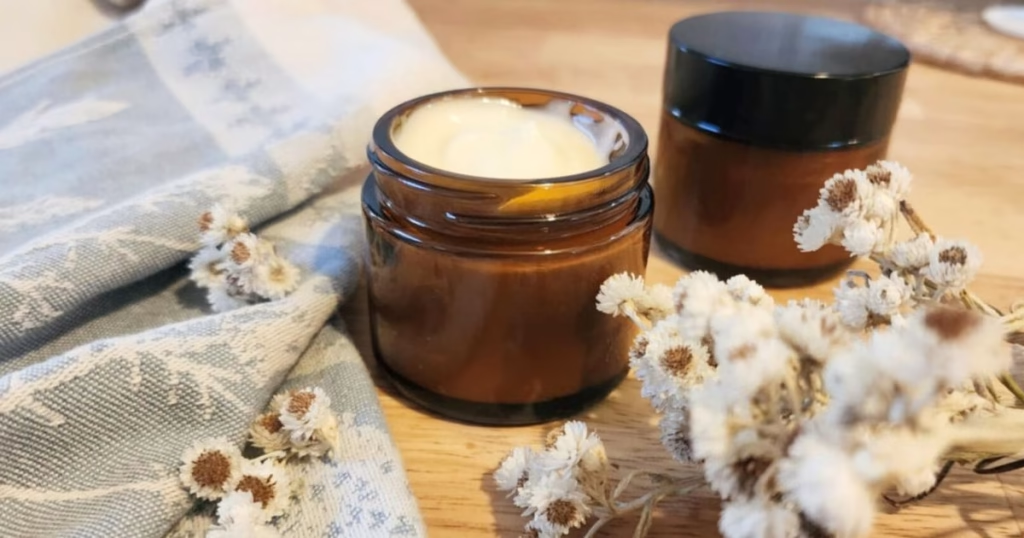
Disclosure: as an Amazon Associate, I earn a small commission from qualifying purchases at no extra cost to you. Read my full Disclosure and Policy here.
If you’ve been following along, you know I love nose-to-tail eating and living, which means using every part of the animal. I also love natural remedies, DIYs, and low-tox living. This homemade tallow face cream is the perfect example of all those things coming together!
Made from rendered suet, this cream is a nourishing, traditional skincare remedy you can make with your own hands. Read on to learn what tallow is, why it’s so incredible for skin, and how to make your own ultra-pure, customizable tallow face cream at home.
If you’re interested in more natural recipes and remedies, make sure to check out my Plantain Salve for Cuts, Bug Bites and More, and my Yarrow Salve for Soothing and Healing Skin.
What is Tallow?
Tallow is the rendered fat from suet, which is the hard, white fat found around the kidneys of ruminant animals such as cows, sheep, goats, and deer. Suet is particularly rich in saturated fats, especially stearic acid, which gives tallow a firm, stable texture, much harder than the fat typically trimmed from steaks or roasts.
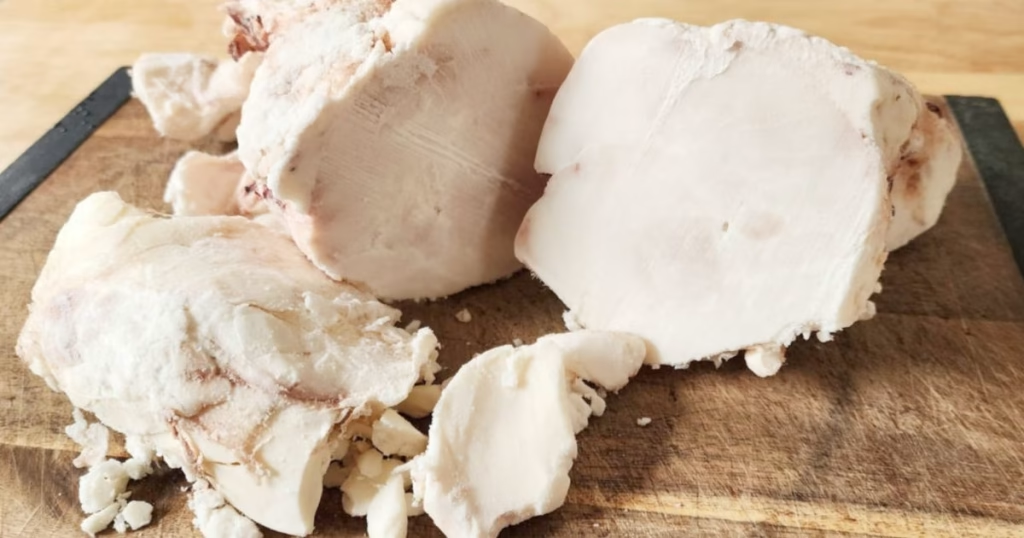
Tallow is not derived from pork or poultry fat; those are rendered into lard and schmaltz, respectively.
Once rendered, suet becomes tallow, a shelf-stable, solid fat that is excellent for cooking, baking, skincare, soap making, candle making, seasoning cast iron pans, or making bird feeders.
How to render suet into tallow
If you have some suet from your bulk meat order, raised or hunted animals, or if you bought some at the store, you can make tallow by simply rendering the suet! 1 pound of beef suet will make about 1 to 1 1/2 cup of tallow. To render suet:
Step 1: Cut suet into small pieces (about 1-inch). For easier handling, you can also pulse partially frozen suet in a food processor or grind it.
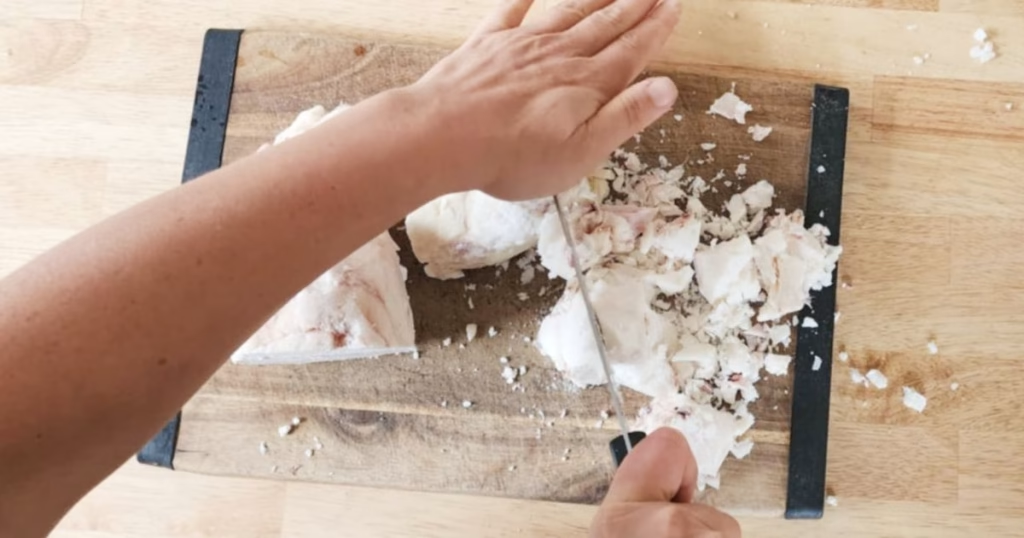
Step 2: Place the suet in a slow cooker or large oven-safe pot. Set to low (or 200–250°F, or 95-120°C, in the oven) and let it slowly melt, stirring occasionally. It may take 2 to 6 hours depending on quantity. Once fully melted and the remaining bits are golden and crisp, it’s ready.
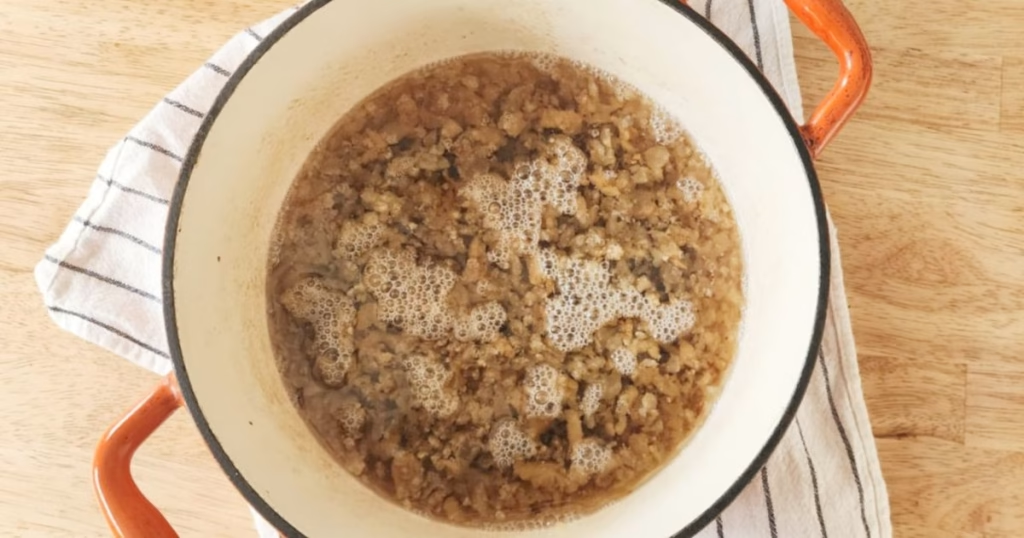
Step 3: Strain the hot tallow through cheesecloth into a jar or bowl to remove impurities. Let it cool and harden in the refrigerator.
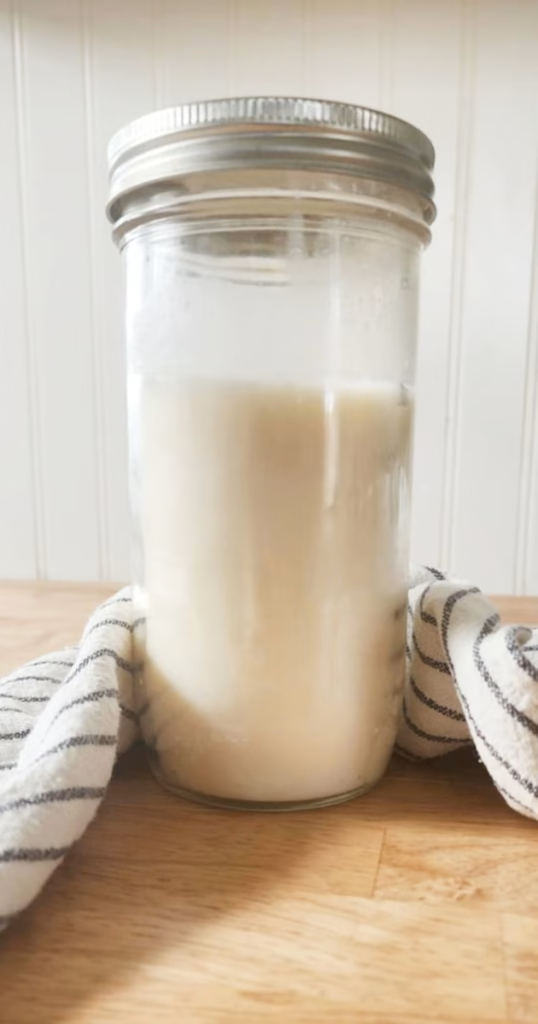
How to purify tallow for skincare
For using in skincare, you can purify tallow further after rendering it. This process includes “washing” the tallow with water and salt, and will give you a very pure tallow that won’t have any weird smells, and will last longer.
Step 1: Add hardened tallow to a pot with enough filtered water to cover. Add 1 tablespoon of salt per pound of tallow. To easily remove hardened tallow from a wide mouth mason jar, place the jar in enough hot water to cover the tallow, and leave for a few minutes. Once the outer layer starts melting, flip the jar and let the block of tallow slide out, helping it with a spatula or fork if necessary.
Step 2: Simmer over low heat for 1 hour.
Step 3: Strain through cheesecloth or clean tea towel into a large bowl or pan.
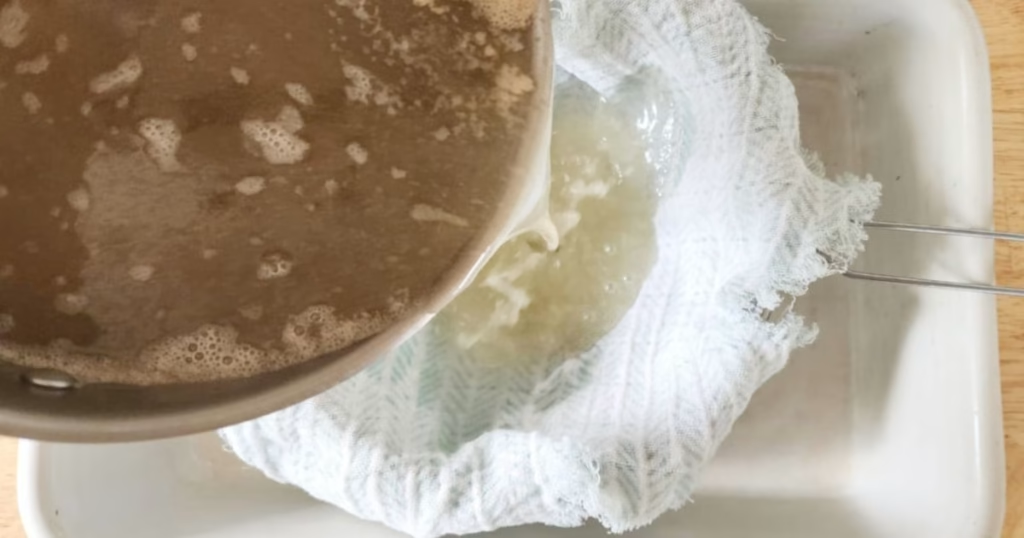
Step 4: Chill in the fridge until the tallow hardens on top. Remove and flip the block, scraping off any brown residue underneath.
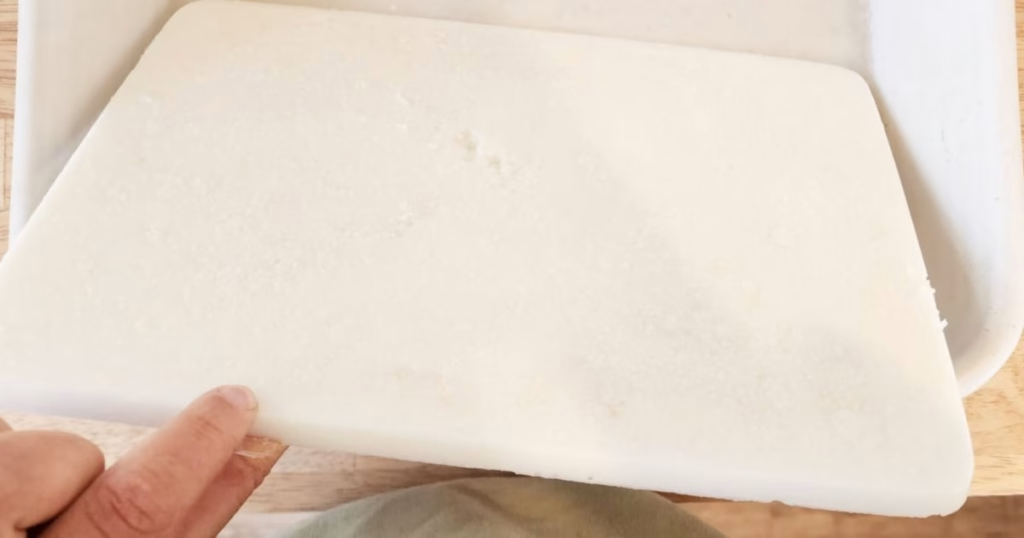
Step 5: Repeat the process for ultra-pure tallow, if desired. Let air dry completely before using or storing to avoid molding.
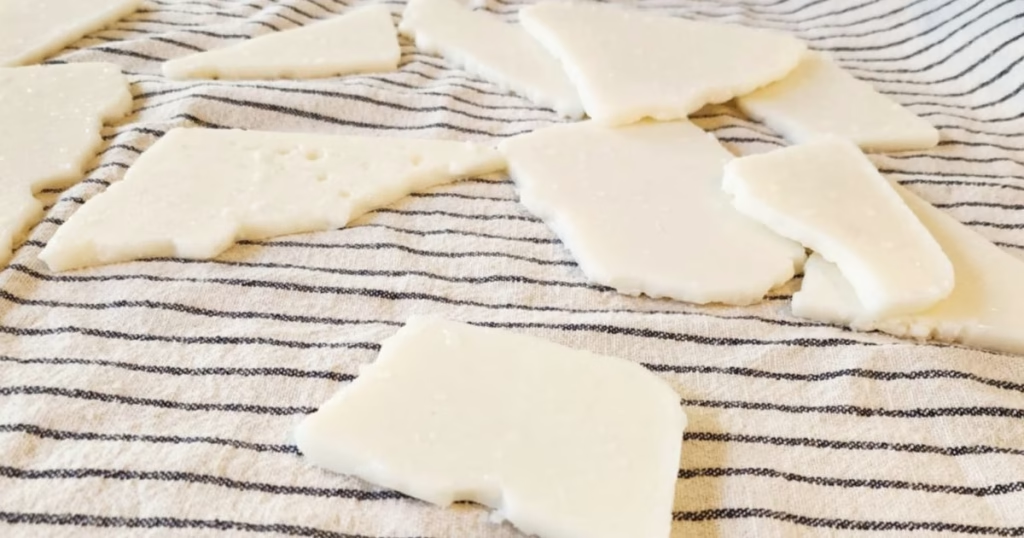
Can you render fat trimmings into tallow?
You can render any beef (or other animals’) fat, but true tallow must come from suet. Other beef fat trimmings (from under the skin or within the muscles) will render a softer fat with a stronger smell and slightly different properties. Pure tallow from suet is firm, off-white, and has a neutral scent.
What is Tallow Cream?
Tallow cream is a natural skincare balm made by blending purified tallow with skin-friendly oils and optional ingredients like essential oils or honey. Since pure tallow is very firm at room temperature, adding oils creates a soft, easily spreadable cream.
What is tallow cream good for?
Tallow cream is deeply nourishing for face, hands, and body. It’s excellent for dry or sensitive skin, soothing after sun exposure, preventing stretch marks during pregnancy, and even for healing eczema or acne. It can also be used as a lip balm or hand cream, or to apply on damaged skin for fast healing.
Tallow cream is suitable for all skin types, and it’s perfect for those drying winter months, as well as for the summer when the skin need to replenish moisture and soothe the skin after all the sun exposure that times with spending a lot of time outdoors.
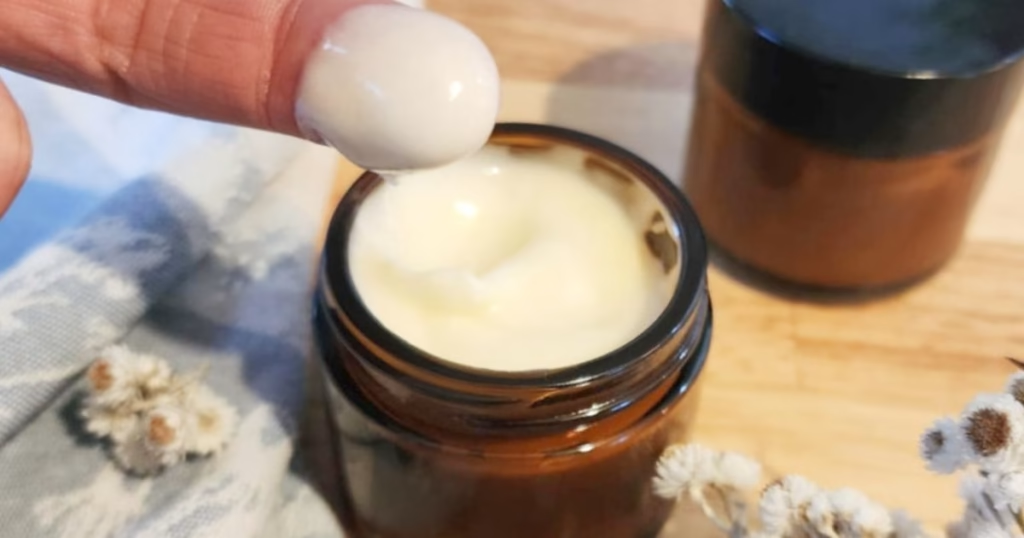
Tallow Face Cream: Benefits
Tallow has been traditionally used to moisture and heal the skin, and it’s a phenomenal skincare product that you’ll fall in love with. For someone like me who has been struggling with dry and sensitive skin and even eczema since childhood, tallow cream is a real game-changer!
Since the composition of beef tallow is similar to the natural oils produced by skin, it absorbs easily and deeply, making tallow cream a great moisturizer that nourishes the skin. Tallow is non-comedogenic so it will provide moisture without clogging your pores, makin it a great choice for skincare and as a facial cream.
Thanks to its content of fat-soluble vitamins A, D, E, and K, conjugated linoleic acid (CLA) and palmitoleic acid, with their antioxidant and ant inflammatory properties, tallow helps support skin barrier function, hydration, elasticity, and natural healing.
For its properties, tallow cream is especially beneficial for dry and sensitive skins, as well as for healing eczema, psoriasis, acne, and as an anti-aging with the potential of reducing fine lines and wrinkles.
Why You Should Make your own Tallow Cream
Tallow cream is quickly becoming a trend in skincare, and many resource to sourcing tallow cream from local stores, Etsy, or other companies. Some popular good options include the organic tallow and Frankincense face balm from Toups and Co, and the F-Balm with tallow, honey, and Frankincense from The Tallowed Truth. These tallow creams are great skincare options, but making your own tallow cream comes with even more benefits:
- More Affordable: Store-bought tallow creams can cost $30–$50 per 2 oz. Homemade tallow cream costs a fraction, especially if rendering suet yourself. You can buy a pound of suet for around $10, and use it to make about 10 oz tallow!
- Fully Customizable: Choose oils and ingredients suited to your skin type and needs. You can omit essential oils for sensitive skin or kids.
- Simple to Make: Even though making your own skincare products might sound intimidating, making your own tallow cream is actually quite easy and straightforward. No fancy equipment needed: just a pot, bowl, and mixer.
- Great Gift: Homemade tallow cream in a cute jar makes a unique, thoughtful, and useful gift perfect for Christmas, birthdays, or any other occasion.
Tallow Cream Recipe: Ingredients
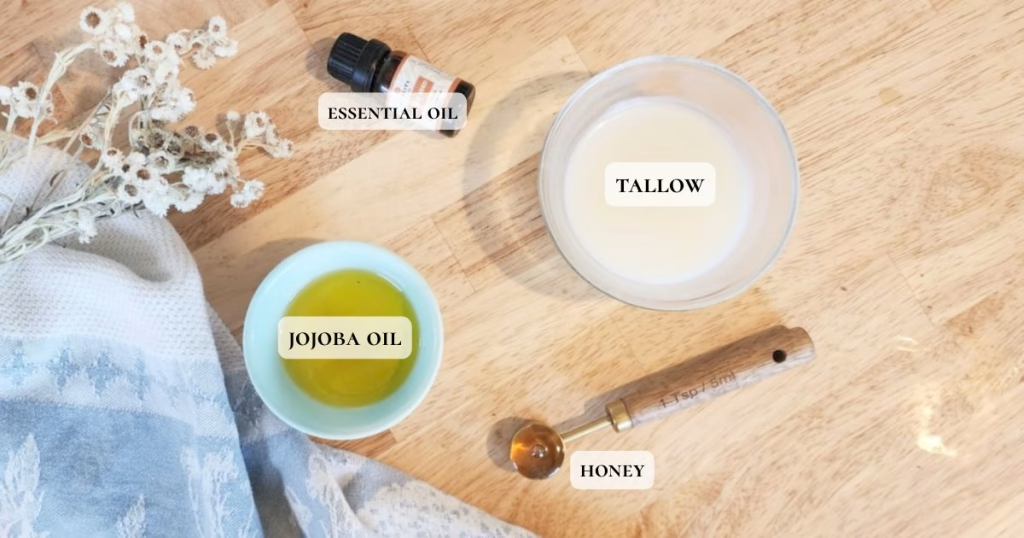
Tallow. Use store-bought or homemade tallow, preferably from grass-fed, naturally raised animals. Refer to my instructions above on how to render and purify tallow.
Oil. You want to use a light oil that is liquid at room temperature and that’s non comedogenic (won’t clog pores) and good for facial skincare. Organic oils are best. Some good options include:
- Jojoba oil: Jojoba oil closely mimics the skin’s natural sebum, making it ideal for balancing oil production. It’s lightweight, hydrating, and great for sensitive, dry, or acne-prone skin. It has the longest shelf life making the cream shelf stable for much longer than other oils.
- Argan oil: Argan oil is rich in vitamin E and essential fatty acids, offering deep moisture and anti-aging benefits. It’s soothing, helps with skin elasticity, and is especially beneficial for dry, sensitive, or mature skin.
- Grape seed oil: Light and fast-absorbing, grapeseed oil is rich in antioxidants and ideal for oily or acne-prone skin. It tones, tightens, and supports skin repair. It’s also quite affordable compared to other oils.
- Apricot kernel oil: Gentle and soothing, apricot kernel oil is perfect for sensitive or irritated skin. It softens and nourishes with a light texture that absorbs well.
- Rosehip oil: Rosehip oil is a vitamin-rich powerhouse that supports collagen production and helps fade scars and dark spots. It’s ideal for aging, sun-damaged, or acne-prone skin thanks to its anti-inflammatory and regenerative properties.
Essential oils (optional). If you wish, you can also add some essential oils to your tallow face cream, to add beneficial properties and a lovely natural fragrance. Make sure to use good quality essential oils, and to test the tolerance of your skin to them before using, as some people might be sensitive to certain essential oils. Some good options include:
- Frankincense essential oil: Frankincense is known for its powerful anti-aging and skin-healing properties. It helps reduce fine lines, improve skin tone, and soothe inflammation, ideal for mature or irritated skin.
- Carrot seed essential oil: Carrot seed oil is rich in antioxidants and has natural SPF properties. It supports skin regeneration, brightens dull skin, and is excellent for aging, sun-damaged, or dry skin.
- Geranium essential oil: Geranium balances oil production and improves skin elasticity, making it great for both dry and oily skin. It also helps reduce the appearance of scars and promotes an even skin tone.
- Tea tree essential oil: Tea tree oil has strong antibacterial and anti-inflammatory properties, making it a top choice for acne-prone or oily skin. It helps clear blemishes while calming redness and irritation.
- Lavender essential oil: Lavender is soothing, calming, and promotes skin healing. It’s suitable for all skin types and helps with redness, irritation, minor burns, and stress-related breakouts.
Honey (optional). For extra benefits especially for sensitive skins, eczema healing, acne, extra hydration, and reducing scars and hyperpigmentation, you can add some honey to your tallow face cream. Raw Manuka honey will give you the best benefits, but any raw honey is suitable.
Tools you may Need to Make Tallow Cream
Double boiler if you have it, or a medium-size saucepan + heat-safe bowl that can sit on top of the saucepan.
Large bowl or jar for blending/mixing ingredients.
Immersion blender or hand mixer (for whipped tallow cream).
Glass cosmetic jar with lid, or a small (2 oz) mason jar or any other suitable jar to store your tallow cream.
Tallow Cream Recipe: Instructions
How to make un-whipped tallow cream
Use this variation for a face cream that has the texture of a balm, rich and nourishing, yet easily applicable.
Step 1: Melt tallow gently in a double boiler or in a large bowl over a saucepan with a couple inches water.
Step 2: Remove from heat, let cool slightly, then mix in oil, essential oils (if using), and honey (optional).
Step 3: Blend until smooth using an immersion blender.
Step 4: Pour into jar and let cool. It will firm up into a soft balm.
How to make whipped tallow face cream
Use this variation for a softer and fluffier face cream that applies effortless.
Step 1: Melt tallow gently in a double boiler or in a large bowl over a saucepan with a couple inches water.
Step 2: Let cool slightly, then mix in oils and optional ingredients.
Step 3: Let the mixture solidify until semi-firm, but not too hard.
Step 4: Whip with a hand mixer until light and fluffy. If the cream doesn’t whip easily after a few minutes, try putting it in the freezer for 1 or 2 minutes and then whip it again.
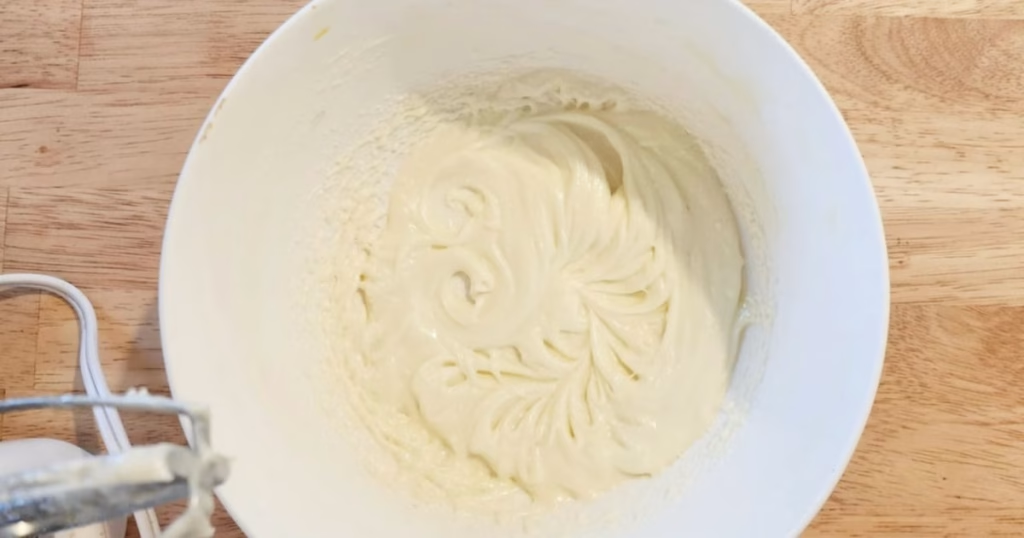
Step 5: Spoon into a jar and store.
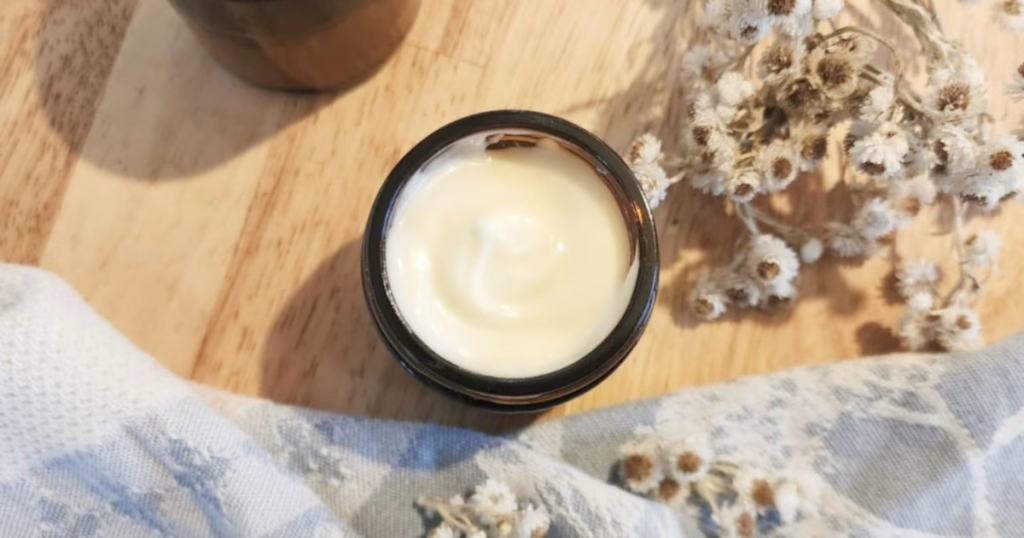
Notes
You can store your homemade tallow cream at room temperature in a dark, cool place (away from direct light and heat). Use a dark glass jar to store your tallow cream to increase its shelf life.
Wash bowls and other tools with soap hot water to remove the tallow residues.
If you try making your own tallow cream and you love it, drop me a comment down below, and don’t forget to leave me a 5-star review!
Pin it for Later
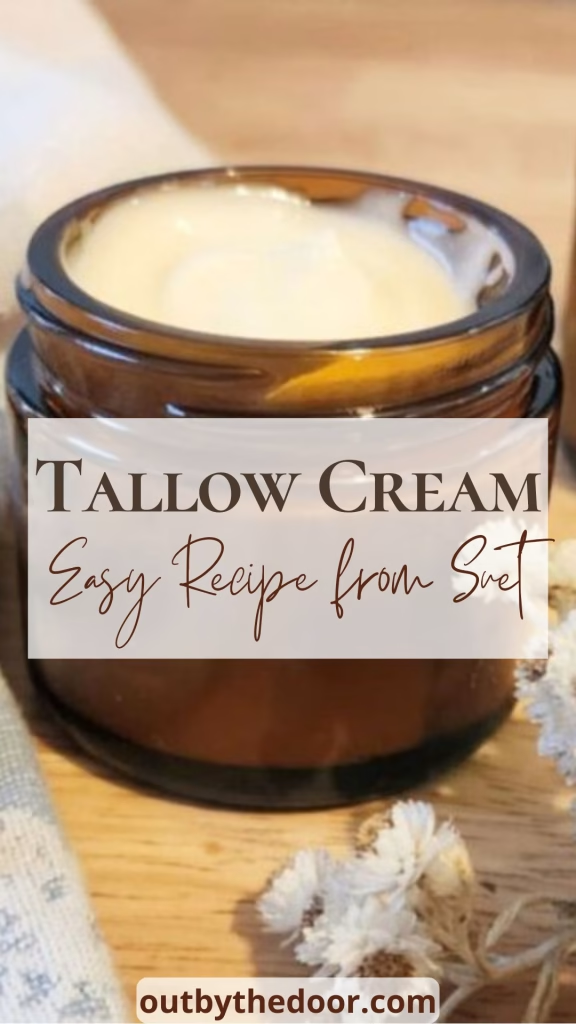
Related Posts and More Natural Recipes from the Blog
Nose to Tail Eating: Benefits and Recipes
How to Make Bone Meal Fertilizer with Bones
Plantain Salve: Easy Recipe for Cuts, Bug Bites and More
Yarrow Salve: Easy DIY Recipe for Soothing and Healing Skin
Printable Recipe Card
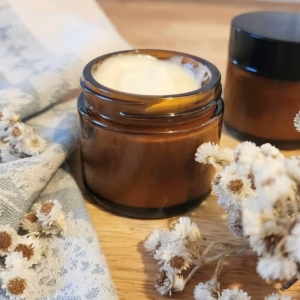
Tallow Face Cream: Easy Recipe, Amazing Moisturizer
Equipment
- Double boiler or saucepan + heat-safe bowl
- Mixing bowl or jar
- Immersion blender or hand mixer
- Storage jar (glass cosmetic jar or mason jar)
Ingredients
- 6 tbsp tallow from beef or other animals, purified
- 2-3 tbsp light oil of choice see notes
- 1 tsp raw honey optional
- 5-10 drops essential oil(s) of choice optional
Instructions
How to make un-whipped tallow cream
- Melt tallow gently in a double boiler or in a large bowl over a saucepan with a couple inches water.
- Remove from heat, let cool slightly, then mix in oil, essential oils (if using), and honey (optional).
- Blend until smooth using an immersion blender.
- Pour into jar and let cool. It will firm up into a soft balm.
How to make whipped tallow face cream
- Melt tallow gently in a double boiler or in a large bowl over a saucepan with a couple inches water.
- Let cool slightly, then mix in oils and optional ingredients.
- Let the mixture solidify until semi-firm and opaque, but not too hard.
- Whip with a hand mixer until light and fluffy. If your cream doesn't whip easily after a few minutes, try placing it in the freezer for 1-2 minutes and try again.
- Spoon into a jar and store.





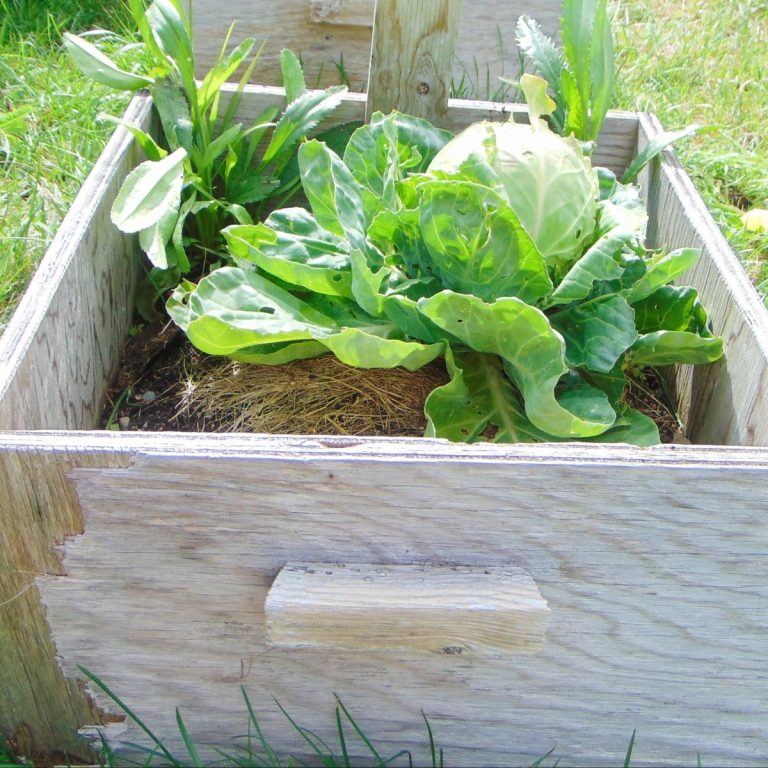
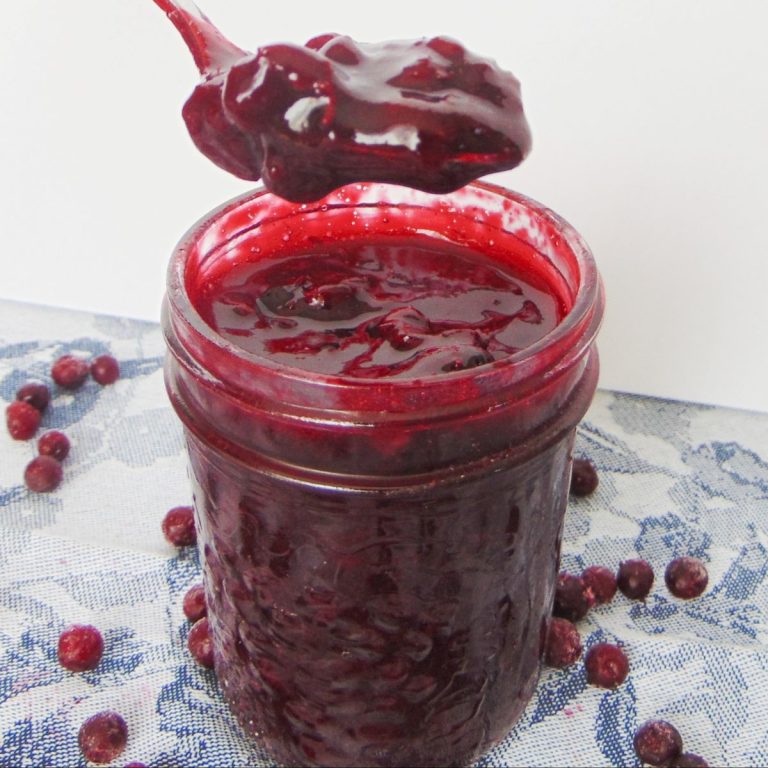
I’ve been thinking of making my own tallow cream/balm..I’ll have to give this a try. Thanks for sharing!
Thank you, Jennifer!
I love this article. It is so detailed and thorough and such an easy and helpful step-by-step guide. I don’t think I’d have any trouble doing all the steps and getting a lovely cream at the end. I’ve been passionate about nose-to-tail since I was a kid and since I do my own butchering, I love finding great recipes for using all the parts of the animals. Thanks so much for sharing!
Thank you so much, Heidi! Your cream will be so much better using your own suet, what a gift! 🙂
This is going to save me so much money! Love supporting small companies but it’s always so expensive…I already have all these ingredients at home!
That’s totally right, Meghan! I hope you have fun making this cream 🙂
I have got to try this! How does tallow compare to beeswax in a cream like this? I’m excited to find out! Thanks for sharing!
Hi Margareta, thanks for reaching out! When you make a cream with oil and beeswax, the beeswax helps give it a firmer texture, but it doesn’t actually absorb into the skin, it acts more as a protective layer that sits on the surface and can help locking in moisture. Tallow, on the other hand, absorbs deeply into the skin, acting as an amazing moisturizer. In this cream, the added oil helps soften the tallow, making the cream softer and easier to apply.
I love using tallow in our skin care products but I’ve always struggled purifying my tallow so it doesn’t smell beefy. The tips for purifying the tallow is just what I needed, thanks!!
Hei Emily, this method is really easy and makes such a difference 🙂
I’ve never added jojoba oil or honey to my tallow cream, I’ll need to try that this next time. Thank you.
Thank you, Kaitlin, I love adding a bit of honey, it does wonder for my skin 🙂